Probing the Deformation Mechanisms of Nanocrystalline Silver by In-Situ Tension and Synchrotron X-ray Diffraction
Abstract
:1. Introduction
2. Materials and Methods
3. Results
4. Discussion
4.1. Stage 1: Grain Growth and Twinning
4.2. Stage 2: Stacking Faults-Dominated Deformation
4.3. Stage 3: Evolution of Excess Dislocations
5. Conclusions
- (1)
- Grain growth and twinning mainly occur during the elastic deformation regime.
- (2)
- Detwinning and evolution of stacking faults occur in the early stage of plastic deformation. Stacking faults rather than dislocations can be stored during this deformation stage. Tensile stress correlates well with the probability of stacking faults in the early stage of plastic deformation. These behaviors support the partial-dislocation-mediated deformation mechanism previously proposed for nc metals.
- (3)
- Grain shrinks whereas excess (or statistically stored) dislocations evolve in the final stage of plastically deformed nc-Ag. The relation between stress and total dislocation density follows the well-known strain-hardening theory developed for coarse-grained metals, suggesting that both statistically stored dislocations and geometrically necessary dislocations provide resistance for the plastic deformation of nc-Ag.
- (4)
- For our nc-Ag tested in a simple tension mode at a constant temperature and strain rate, multiple mechanisms such as grain growth, grain shrinking, twinning, detwinning, stacking faults, and statistically stored dislocations evolve in the elastic and/or plastic deformation stages. However, resistance for the plastic deformation is mainly provided by stacking faults (in the early stage of plastic deformation) and dislocations (in the final stage of plastic deformation).
Author Contributions
Funding
Acknowledgments
Conflicts of Interest
References
- Meyers, M.A.; Mishra, A.; Benson, D.J. Mechanical properties of nanocrystalline materials. Prog. Mater. Sci. 2006, 51, 427–556. [Google Scholar] [CrossRef]
- Zhu, Y.T.; Liao, X.Z.; Wu, X.L. Deformation twinning in nanocrystalline materials. Prog. Mater. Sci. 2012, 57, 1–62. [Google Scholar] [CrossRef] [Green Version]
- Glezer, A.M.; Kozlov, E.; Koneva, N.A.; Popova, N.A.; Kurzina, I.A. Plastic Deformation of Nanostructured Materials; CRC Press: Boca Raton, FL, USA, 2017. [Google Scholar]
- Shen, T.D.; Schwarz, R.B.; Feng, S.; Swadener, J.G.; Huang, J.Y.; Tang, M.; Zhang, J.; Vogel, S.C.; Zhao, Y. Effect of solute segregation on the strength of nanocrystalline alloys: Inverse Hall-Petch relation. Acta Mater. 2007, 55, 5007–5013. [Google Scholar] [CrossRef]
- Ozerinc, S.; Tai, K.; Vo, N.Q.; Bellon, P.; Averback, R.S.; King, W.P. Grain boundary doping strengthens nanocrystalline copper alloys. Scr. Mater. 2012, 67, 720–723. [Google Scholar] [CrossRef]
- Abramova, M.M.; Enikeev, N.A.; Valiev, R.Z.; Etienne, A.; Radiguet, B.; Ivanisenko, Y.; Sauvage, X. Grain boundary segregation induced strengthening of an ultrafine-grained austenitic stainless steel. Mater. Lett. 2014, 136, 349–352. [Google Scholar] [CrossRef]
- Shen, T.D.; Xin, S.W.; Sun, B.R. Influence of annealing on the mechanical property of iron- and nickel-based nanocrystalline alloys. Mater. Sci. Eng. A 2015, 627, 139–144. [Google Scholar] [CrossRef]
- Liu, P.; Mao, S.C.; Wang, L.H.; Han, X.D.; Zhang, Z. Direct dynamic atomic mechanisms of strain-induced grain rotation in nanocrystalline, textured, columnar-structured thin gold films. Scr. Mater. 2011, 64, 343–346. [Google Scholar] [CrossRef]
- Kobler, A.; Kashiwar, A.; Hahn, H.; Kübel, C. Combination of in situ straining and ACOMTEM: A novel method for analysis of plastic deformation of nanocrystalline metals. Ultramicroscopy 2013, 128, 68–81. [Google Scholar] [CrossRef]
- Wang, L.; Teng, J.; Liu, P.; Hirata, A.; Ma, E.; Zhang, Z.; Chen, M.; Han, X. Grain rotation mediated by grain boundary dislocations in nanocrystalline platinum. Nat. Commun. 2014, 5, 4402. [Google Scholar] [CrossRef]
- Lohmiller, J.; Baumbusch, R.; Kraft, O.; Gruber, P.A. Differentiation of deformation modes in nanocrystalline Pd films inferred from peak asymmetry evolution using in situ x-ray diffraction. Phys. Rev. Lett. 2013, 110, 066101. [Google Scholar] [CrossRef]
- Wang, L.; Xin, T.; Kong, D.; Shu, X.; Chen, Y.; Zhou, H.; Teng, J.; Zhang, Z.; Zhou, J.; Han, X. In Situ observation of stress induced grain boundary migration in nanocrystalline gold. Scr. Mater. 2017, 134, 95–99. [Google Scholar] [CrossRef]
- Li, B.Q.; Sui, M.L.; Mao, S.X. Pseudoelastic stacking fault and deformation twinning in nanocrystalline Ni. Appl. Phys. Lett. 2010, 97, 241912. [Google Scholar] [CrossRef]
- Li, B.Q.; Li, B.; Wang, Y.B.; Sui, M.L.; Ma, E. Twinning mechanism via synchronized activation of partial dislocations in face-centered-cubic materials. Scr. Mater. 2011, 64, 852–855. [Google Scholar] [CrossRef]
- Kobler, A.; Lohmiller, J.; Schäfer, J.; Kerber, M.; Castrup, A.; Kashiwar, A.; Gruber, P.A.; Albe, K.; Hahn, H.; Kübel, C. Deformation-induced grain growth and twinning in nanocrystalline palladium thin films. Beilstein J. Nanotech. 2013, 4, 554–566. [Google Scholar] [CrossRef] [Green Version]
- Van Petegem, S.; Li, L.; Anderson, P.M.; Van Swygenhoven, H. Deformation mechanisms in nanocrystalline metals: Insights from in-situ diffraction and crystal plasticity modelling. Thin Solid Film 2013, 530, 20–24. [Google Scholar] [CrossRef]
- Wang, L.; Zhang, Z.; Ma, E.; Han, X.D. Transmission electron microscopy observations of dislocation annihilation and storage in nanograins. Appl. Phys. Lett. 2011, 98, 051905. [Google Scholar] [CrossRef]
- Adachi, H.; Karamatsu, Y.; Nakayama, S.; Miyazawa, T.; Sato, M.; Yamasaki, T. Elastic and plastic deformation behavior studied by in-situ synchrotron X-ray diffraction in nanocrystalline nickel. Mater. Trans. 2016, 57, 1447–1453. [Google Scholar] [CrossRef] [Green Version]
- Wang, L.; Han, X.; Liu, P.; Yue, Y.; Zhang, Z.; Ma, E. In Situ observation of dislocation behavior in nanometer grains. Phys. Rev. Lett. 2010, 105, 135501. [Google Scholar] [CrossRef] [Green Version]
- Sun, Z.; Van Petegem, S.; Cervellino, A.; Durst, K.; Blume, W.; Van Swygenhovena, H. Dynamic recovery in nanocrystalline Ni. Acta Mater. 2015, 91, 91–100. [Google Scholar] [CrossRef]
- Sarkar, R.; Rentenberger, C.; Rajagopalan, J. Electron beam induced artifacts during in situ TEM deformation of nanostructured metals. Sci. Rep. 2015, 5, 16345. [Google Scholar] [CrossRef] [Green Version]
- Zhang, X.H.; Wang, H.; Kassem, M.; Narayan, J.; Koch, C.C. Preparation of bulk ultrafine-grained and nanostructured Zn, Al and their alloys by in situ consolidation of powders during mechanical attrition. Scr. Mater. 2002, 46, 661–665. [Google Scholar] [CrossRef]
- Ribarik, G.; Ungar, T.; Gubicza, J. MWP-fit: A program for multiple whole-profile fitting of diffraction peak profiles by ab initio theoretical functions. Appl. Cryst. 2001, 34, 669–676. [Google Scholar] [CrossRef] [Green Version]
- Warren, B.E.; Averbach, B.L. The separation of cold-work distortion and particle size broadening in x-ray patterns. J. Appl. Phys. 1952, 23, 497. [Google Scholar] [CrossRef]
- Gallagher, P.C.J. The influence of alloying, temperature, and related effects on the stacking fault energy. Metall. Trans. 1970, 1, 2429–2461. [Google Scholar]
- Paterson, M.S. X-ray diffraction by face-centered cubic crystals with deformation faults. J. Appl. Phys. 1952, 23, 805–811. [Google Scholar] [CrossRef]
- Wagner, C.N.J. Stacking faults by low-temperature cold work in copper and alpha brass. Acta Met. 1957, 5, 427–434. [Google Scholar] [CrossRef]
- Warren, B.E.; Warekois, E.P. Stacking faults in cold worked alpha-brass. Acta Met. 1955, 3, 473–479. [Google Scholar] [CrossRef]
- Wagner, C.N.J. X-ray study of low-temperature cold work in silver and aluminum. Acta Met. 1957, 5, 477–482. [Google Scholar] [CrossRef]
- Cohen, J.B.; Wagner, C.N.J. Determination of twin fault probabilities from the diffraction patterns of fcc metals and alloys. J. Appl. Phys. 1962, 33, 2073–2077. [Google Scholar] [CrossRef]
- Carreker, R.P. Tensile deformation of silver as a function of temperature, strain rate, and grain size. JOM 1957, 9, 112–115. [Google Scholar] [CrossRef]
- Smithells, C.J. Metals Reference Book, 5th ed.; Butterworth & Co. Ltd.: London, UK, 1976; p. 975. [Google Scholar]
- Shen, T.D.; Koch, C.C.; Tsui, T.Y.; Pharr, G.M. On the elastic moduli of nanocrystalline Fe, Cu, Ni, and Cu–Ni alloys prepared by mechanical milling/ alloying. J. Mater. Res. 1995, 10, 2892–2896. [Google Scholar] [CrossRef]
- Lord, J.D.; Morrell, R.M. Elastic modulus measurement-obtaining reliable data from the tensile test. Metrologia 2010, 47, S41–S49. [Google Scholar] [CrossRef]
- Bailey, J.E.; Hirsch, P.B. The dislocation distribution, flow stress, and stored energy in cold-worked polycrystalline silver. Philos. Mag. 1960, 5, 485–497. [Google Scholar] [CrossRef]
- Ashby, M.F. The deformation of plastically non-homogeneous materials. Philos. Mag. 1970, 21, 399–424. [Google Scholar] [CrossRef]
- Adler, R.P.I.; Wagner, C.N.J. X-ray diffraction study of the effects of solutes on the occurrence of stacking faults in silver-base alloys. J. Appl. Phys. 1962, 33, 3451–3458. [Google Scholar] [CrossRef]
- Fan, G.J.; Wang, Y.D.; Fu, L.F.; Choo, H.; Liaw, P.K.; Ren, Y.; Browning, N.D. Orientation-dependent grain growth in a bulk nanocrystalline alloy during the uniaxial compressive deformation. Appl. Phys. Lett. 2006, 88, 171914. [Google Scholar] [CrossRef]
- Fan, G.J.; Fu, L.F.; Qiao, D.C. Grain growth in a bulk nanocrystalline Co alloy during tensile plastic deformation. Scr. Mater. 2006, 54, 2137–2141. [Google Scholar] [CrossRef]
- Fan, G.J.; Fu, L.F.; Choo, H.; Liaw, P.K.; Browning, N.D. Uniaxial tensile plastic deformation and grain growth of bulk nanocrystalline alloys. Acta Mater. 2006, 54, 4781–4792. [Google Scholar] [CrossRef]
- Gai, P.L.; Zhang, K.; Weertman, J. Electron microscopy study of nanocrystalline copper deformed by a microhardness indenter. Scr. Mater. 2007, 56, 25–28. [Google Scholar] [CrossRef]
- Jin, M.; Minor, A.M.; Stach, E.A.; Morris, J.W., Jr. Direct observation of deformation-induced grain growth during the nanoindentation of ultrafine-grained Al at room temperature. Acta Mater. 2004, 52, 5381–5387. [Google Scholar] [CrossRef]
- Legros, M.; Gianola, D.S.; Hemker, K.J. In Situ TEM observations of fast grain-boundary motion in stressed nanocrystalline aluminum films. Acta Mater. 2008, 56, 3380–3393. [Google Scholar] [CrossRef]
- Liao, X.Z.; Kilmametov, A.R.; Valiev, R.Z.; Gao, H.; Li, X.; Mukherjee, A.K.; Bingert, J.F.; Zhu, Y.T. High-pressure torsion-induced grain growth in electrodeposited nanocrystalline Ni. Appl. Phys. Lett. 2006, 88, 021909. [Google Scholar] [CrossRef]
- Wang, Y.B.; Li, B.Q.; Sui, M.L.; Mao, S.X. Deformation-induced grain rotation and growth in nanocrystalline Ni. Appl. Phys. Lett. 2008, 92, 011903. [Google Scholar] [CrossRef]
- Wang, Y.B.; Ho, J.C.; Liao, X.Z.; Li, H.Q.; Ringer, S.P.; Zhu, Y.T. Mechanism of grain growth during severe plastic deformation of a nanocrystalline Ni–Fe alloy. Appl. Phys. Lett. 2009, 94, 011908. [Google Scholar] [CrossRef] [Green Version]
- Zhang, K.; Weertman, J.R.; Eastman, J.A. Rapid stress-driven grain coarsening in nanocrystalline Cu at ambient and cryogenic temperatures. Appl. Phys. Lett. 2005, 87, 061921. [Google Scholar] [CrossRef]
- Gianola, D.S.; Petegem, S.V.; Legros, M.; Brandstetter, S.; Swygenhoven, H.V.; Hemker, K.J. Stress-assisted discontinuous grain growth and its effect on the deformation behavior of nanocrystalline aluminum thin films. Acta Mater. 2006, 54, 2253–2263. [Google Scholar] [CrossRef]
- Haslam, A.J.; Phillpot, S.R.; Wolf, D.; Moldovan, D.; Gleiter, H. Mechanisms of grain growth in nanocrystalline fcc metals by molecular-dynamics simulation. Mater. Sci. Eng. A 2001, 318, 293–312. [Google Scholar] [CrossRef]
- Xu, X.; Zhu, Y.T.; Chen, M.W.; Ma, E. Twinning and stacking fault formation during tensile deformation of nanocrystalline Ni. Scr. Mater. 2006, 54, 1685–1690. [Google Scholar]
- Yamakov, V.; Wolf, D.; Phillpot, S.R.; Mukherjee, A.K.; Gleiter, H. Deformation-mechanism map for nanocrystalline metals by molecular-dynamics simulation. Nat. Mater. 2004, 3, 43–47. [Google Scholar] [CrossRef]
- Liao, X.Z.; Zhao, Y.H.; Srinivasan, S.G.; Zhu, Y.T.; Valiev, R.Z.; Gunderov, D.V. Deformation twinning in nanocrystalline copper at room temperature and low strain rate. Appl. Phys. Lett. 2004, 84, 592–594. [Google Scholar] [CrossRef] [Green Version]
- Shan, Z.; Stach, E.A.; Wiezorek, J.M.K.; Knapp, J.A.; Follstaedt, D.M.; Mao, S.X. Grain boundary-mediated plasticity in nanocrystalline nickel. Science 2004, 305, 654–657. [Google Scholar] [CrossRef] [PubMed] [Green Version]
- Shen, T.D.; Koch, C.C.; McCormick, T.L.; Nemanich, R.J.; Huangv, J.Y.; Huang, J.G. The structure and properties of amorphous/nanocrystallite silicon produced by ball milling. J. Mater. Res. 1995, 10, 139–148. [Google Scholar] [CrossRef]
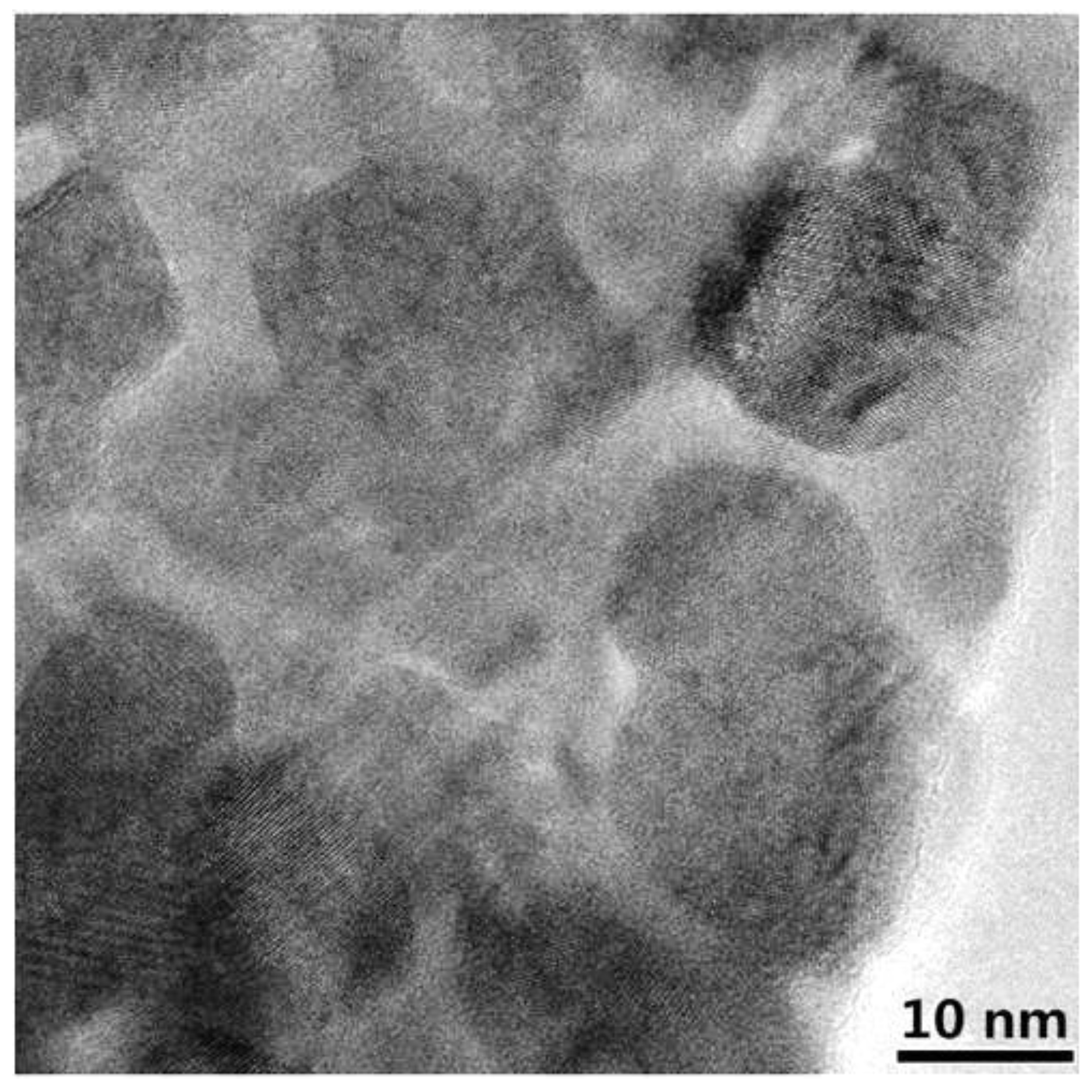
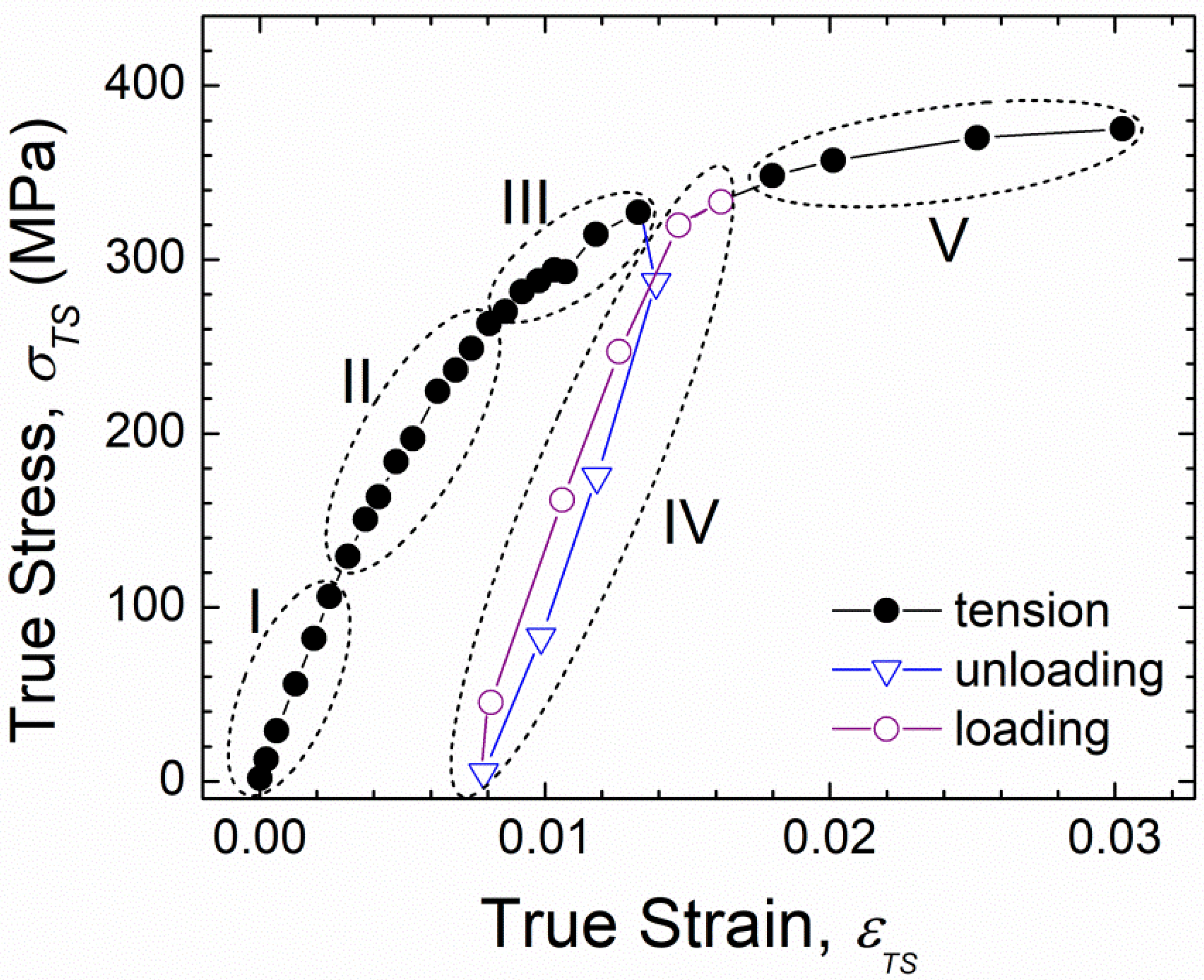


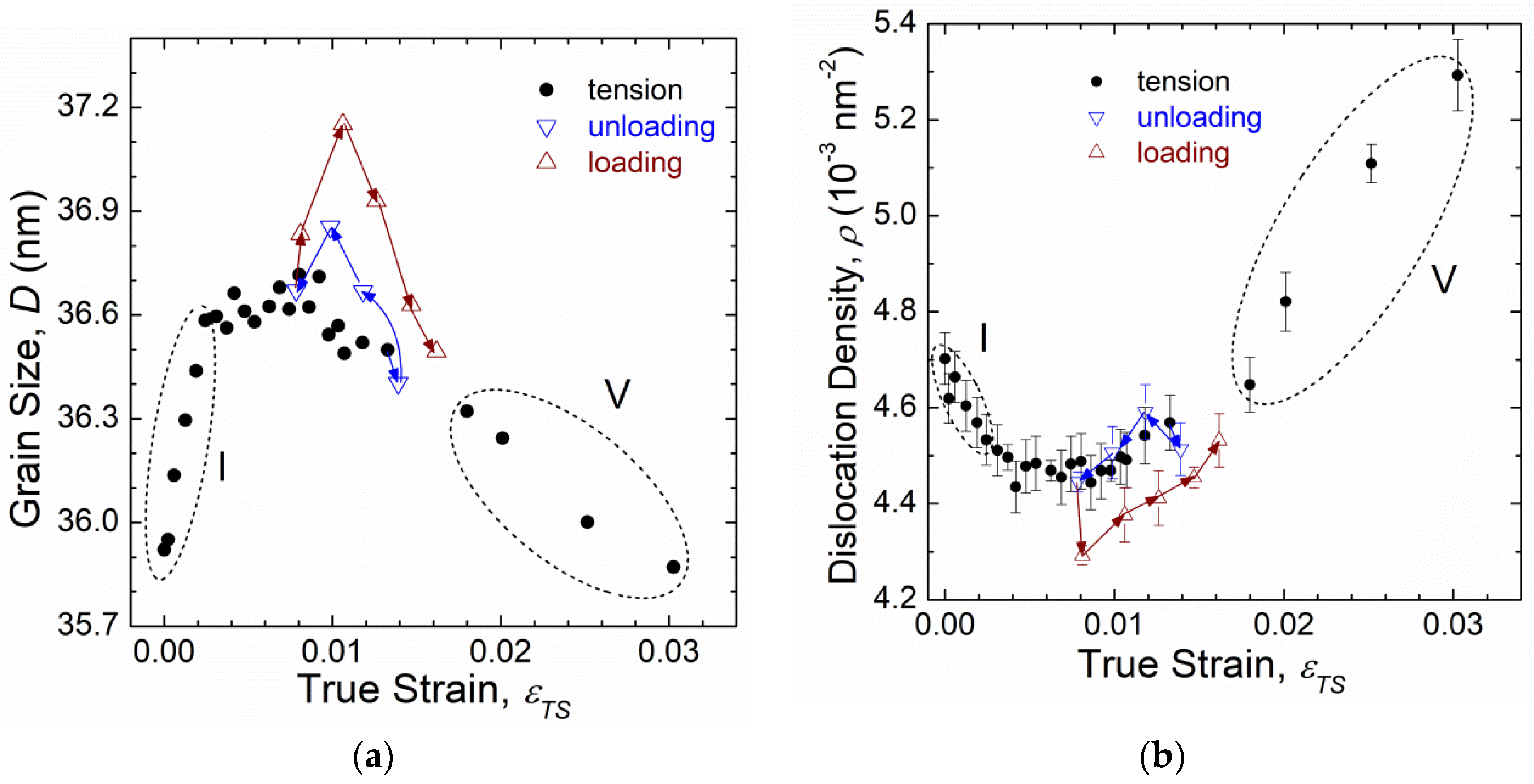

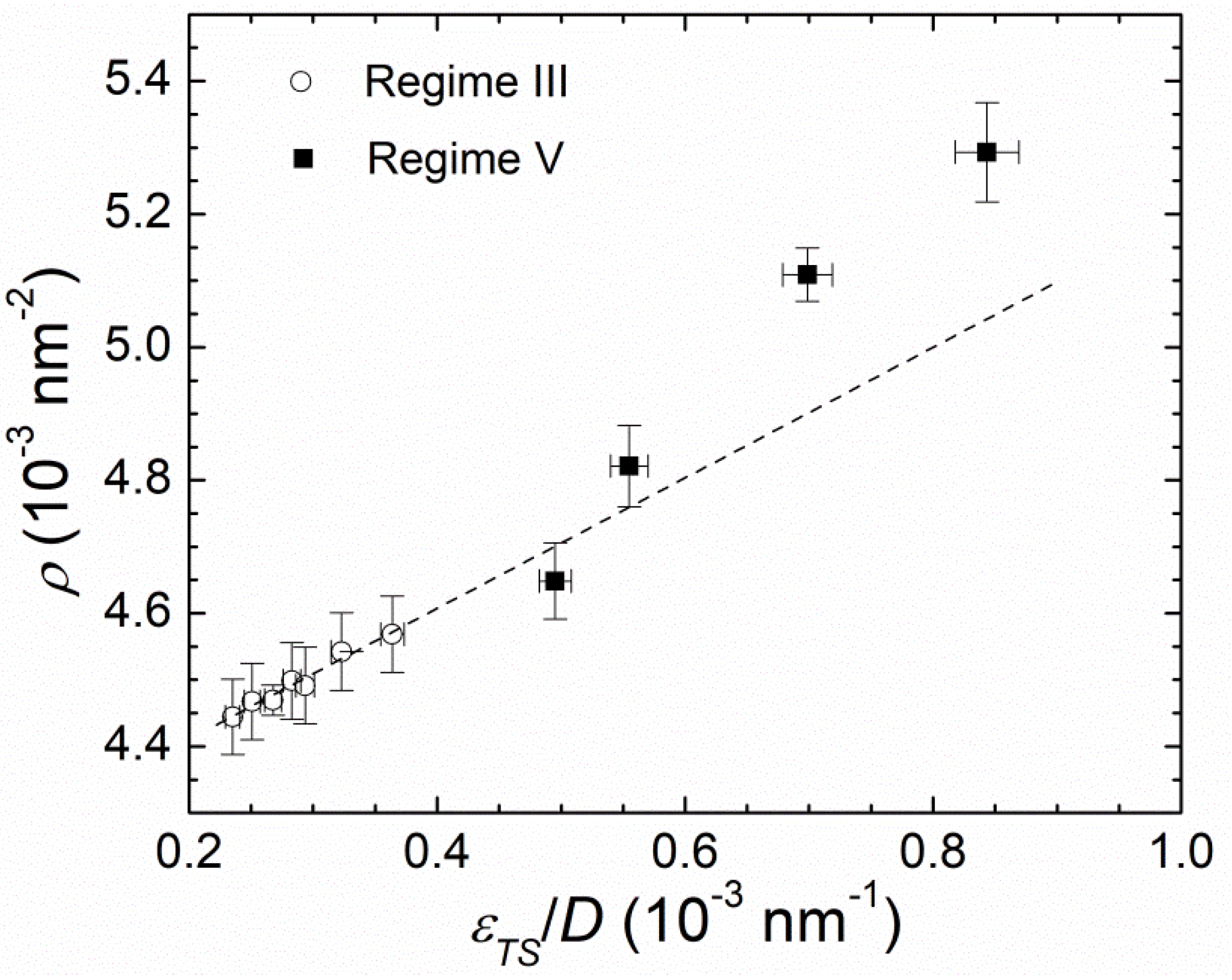

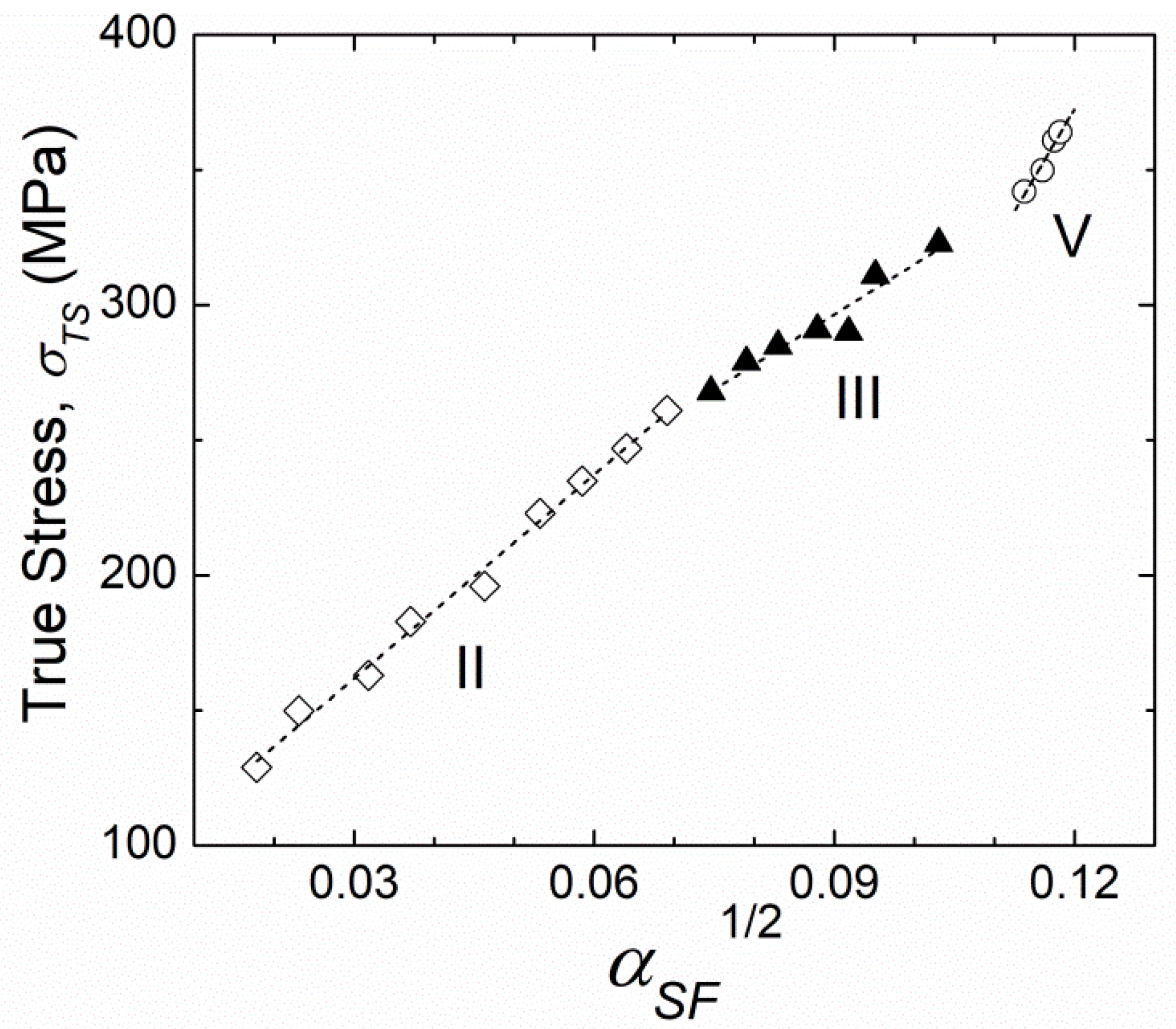
| In-Situ Study | Metal | D (nm) 5 | Deformation Mechanisms | Ref. |
|---|---|---|---|---|
| TEM 1 | Au | 20 | Grain rotation | [8] |
| TEM & STEM 2 | Au | 37 | GB 6 motion; Grain rotation; Twinning/detwinning; Grain growth (by 2.5%). | [9] |
| TEM | Au | 18 | Cross-grain dislocations (D > 20 nm); GB migration (D < 15 nm). | [12] |
| HRTEM 3 | Ni | 20 | Dislocation emission from GBs 7; Dislocation absorption by GBs; Reversible twinning | [13] |
| HRTEM | Ni | 20 | Twinning | [14] |
| SXRD 4 | Ni | 26 | Dislocation absorption by GBs | [16] |
| SXRD | Ni | 35 | Competition between dislocation-based and GB-mediated mode | [20] |
| SXRD | Ni | 52 | Dislocation accumulation | [18] |
| SXRD | Pd | 28 | GB migration; Grain growth (from 28 to 33 nm). | [11] |
| TEM & SXRD | Pd | 35 | Grain growth; Twinning/detwinning. | [15] |
| TEM | Pt | <10 | Full dislocations and the Lomer locks (D ~ 10 nm); Partial dislocations and stacking faults (D < 10 nm). | [19] |
| TEM | Pt | 5–20 | Dislocations nucleation from GBs; Storage of dislocations. | [17] |
| HRTEM | Pt | <15 | Dislocation glide (D > 6 nm); Grain rotation (D < 6 nm). | [10] |
Publisher’s Note: MDPI stays neutral with regard to jurisdictional claims in published maps and institutional affiliations. |
© 2020 by the authors. Licensee MDPI, Basel, Switzerland. This article is an open access article distributed under the terms and conditions of the Creative Commons Attribution (CC BY) license (http://creativecommons.org/licenses/by/4.0/).
Share and Cite
Sun, B.; Shen, T. Probing the Deformation Mechanisms of Nanocrystalline Silver by In-Situ Tension and Synchrotron X-ray Diffraction. Metals 2020, 10, 1635. https://doi.org/10.3390/met10121635
Sun B, Shen T. Probing the Deformation Mechanisms of Nanocrystalline Silver by In-Situ Tension and Synchrotron X-ray Diffraction. Metals. 2020; 10(12):1635. https://doi.org/10.3390/met10121635
Chicago/Turabian StyleSun, Baoru, and Tongde Shen. 2020. "Probing the Deformation Mechanisms of Nanocrystalline Silver by In-Situ Tension and Synchrotron X-ray Diffraction" Metals 10, no. 12: 1635. https://doi.org/10.3390/met10121635






